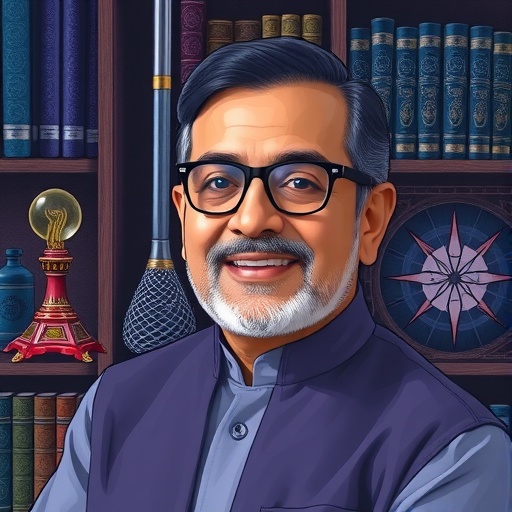In the ever-evolving realm of pediatric medicine, the importance of effective communication and understanding emerging challenges cannot be overstated. A recent discourse in the scholarly community highlights the exchange between esteemed authors, Yatham, Herbert, and Rogers, who provided a pointed reply in the realm of pediatric radiology. This dialogue not only sparks interest within the specific field but also resonates with broader implications regarding radiological interpretations and their impact on clinical outcomes.
At the heart of this discussion lies a crucial examination of methodologies and interpretations associated with pediatric imaging. As radiology becomes increasingly sophisticated with advancements in medical technology, the role of the radiologist grows more complex. The article in reference delves into the nuances of these evolving techniques, showcasing examples that illustrate both strengths and potential pitfalls. This lays the groundwork for understanding the significance of collaborative discourse among specialists who analyze the interpretations of pediatric scans.
The article addresses critiques posed by Kambhampati B., raising essential questions about the reliability of certain imaging techniques in specific clinical scenarios. This prompts an exploration into the methodologies applied by the authors of the reply, who advocate for a more nuanced understanding of radiological data. Their perspective underscores the necessity for continuous dialogue within the scientific community in seeking clarity and consensus on analytical frameworks and clinical decisions based on imaging results.
Central to the discourse is the role of pediatric radiologists in ensuring optimal care and outcomes for their young patients. Ensuring comprehensive training and fostering a collaborative environment is imperative. The authors highlight several case studies wherein the interpretation of radiological data led to markedly different clinical decisions, showcasing the potential consequences of ambiguous readings. By detailing these instances, they stress the responsibility of radiologists to not only produce accurate diagnoses but also communicate findings effectively to referring physicians and families alike.
In an age where misinterpretation of medical data can lead to detrimental outcomes, the authors emphasize the importance of a multidisciplinary approach in pediatric care. Collaboration between pediatricians, radiologists, and other specialists is highlighted as vital in minimizing risks and enhancing patient safety. This approach ensures that all team members are on the same page when it comes to interpretation and management strategies, ultimately benefiting patient welfare.
Moreover, as technology progresses, the integration of artificial intelligence (AI) in radiology is becoming more prevalent. The authors deliberate on how AI can assist radiologists in making more informed decisions while acknowledging that reliance on technology must be balanced with human expertise and clinical judgment. This aspect of the conversation touches upon the future of pediatric radiology and serves as a pivot point for discussions surrounding ethical considerations in AI implementation.
In reflecting on the broader implications of the exchange, the importance of clear communication and critical thinking is brought to the forefront. The authors advocate for ongoing education among medical professionals to ensure that practitioners remain informed about the latest developments in imaging techniques and their interpretations. This commitment to lifelong learning is essential in navigating the complexities of modern medicine effectively.
Further, the importance of patient-centered care is emphasized throughout the reply. The authors argue that understanding the emotional and psychological impacts of medical imaging on children and their families is as crucial as the technical aspects of imaging itself. They advocate for approaches that prioritize open communication with families, ensuring that parents and guardians are well-informed about the procedures and interpretations involving their children.
Discussion of the ethical use of imaging resources in a healthcare setting also arises in the content. The authors reflect on practices that prioritize the well-being of young patients while addressing the potential for over-reliance on imaging modalities for clinical decisions. Ethical considerations are particularly vital in pediatrics, where the stakes are incredibly high. Ensuring that imaging is truly warranted and beneficial to the child’s health is paramount.
The reply serves not only to address specific critiques but also acts as a clarion call for the pediatric radiology community to engage in high-level dialogue about best practices, ethical considerations, and the future landscape of the field. The conversation encourages reflection on how radiological practices must evolve in tandem with technological advances and clinical understanding.
In summary, the exchange between Yatham, Herbert, and Rogers encapsulates the essence of scientific inquiry, where questioning and dialogue form the backbone of professional advancement. The insights derived from this reply will inevitably influence how pediatric radiology is practiced and perceived in the coming years.
Ultimately, it is the goal of such discussions to foster an environment where pediatric patients receive the highest quality of care, informed by mutual respect and evidence-based practice among all medical professionals involved. As the medical field gears up for the future, dialogues like this one will play a crucial role in shaping practices that prioritize accuracy, collaboration, and above all, the well-being of young patients.
Subject of Research: Pediatric Radiology Interpretations
Article Title: Reply to Kambhampati B.
Article References:
Yatham, S.S., Herbert, L. & Rogers, A. Reply to Kambhampati B.
Pediatr Radiol (2025). https://doi.org/10.1007/s00247-025-06368-2
Image Credits: AI Generated
DOI: https://doi.org/10.1007/s00247-025-06368-2
Keywords: Pediatric Radiology, Imaging Techniques, Medical Ethics, Artificial Intelligence, Patient Safety, Multidisciplinary Approach, Continuing Education.




